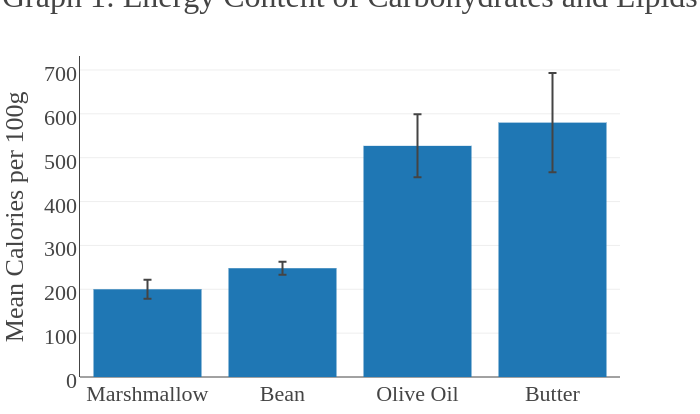Embark on a captivating journey with Student Exploration: Ideal Gas Law, a comprehensive guide that unveils the intricacies of this fundamental scientific principle. Delving into the properties, relationships, and applications of ideal gases, this exploration promises to ignite your curiosity and deepen your understanding of the physical world.
From the fundamental assumptions to real-world applications, this guide will provide you with a solid foundation in the ideal gas law, empowering you to solve problems, conduct experiments, and appreciate its significance in various scientific fields.
Properties of Ideal Gases
The ideal gas law is a mathematical equation that describes the behavior of gases under certain assumptions. These assumptions include:
- The gas particles are in constant random motion.
- The gas particles are point masses with no volume.
- The gas particles do not interact with each other except through elastic collisions.
- The temperature of the gas is uniform.
Many gases, such as air, helium, and hydrogen, can be considered ideal gases under ordinary conditions. The ideal gas law is a useful tool for predicting the behavior of these gases.
Mathematical Equation for the Ideal Gas Law
The mathematical equation for the ideal gas law is:
PV = nRT
where:
- P is the pressure of the gas (in pascals)
- V is the volume of the gas (in cubic meters)
- n is the number of moles of gas (in moles)
- R is the ideal gas constant (8.314 J/mol·K)
- T is the temperature of the gas (in Kelvin)
The ideal gas law can be used to solve a variety of problems involving gases. For example, it can be used to calculate the pressure, volume, or temperature of a gas if the other two variables are known.
Relationships between Variables
The ideal gas law, PV = nRT, is a powerful tool for understanding the behavior of gases. It allows us to predict how the pressure, volume, temperature, and number of moles of a gas will change when one or more of these variables is changed.
In this section, we will explore the relationships between the variables in the ideal gas law. We will discuss Boyle’s Law, Charles’s Law, and Gay-Lussac’s Law.
Boyle’s Law, Student exploration: ideal gas law
Boyle’s Law describes the relationship between the pressure and volume of a gas at constant temperature. It states that the pressure of a gas is inversely proportional to its volume. This means that as the volume of a gas increases, its pressure decreases, and as the volume of a gas decreases, its pressure increases.
Mathematically, Boyle’s Law can be expressed as:
P₁V₁ = P₂V₂
where P₁ and V₁ are the initial pressure and volume of the gas, and P₂ and V₂ are the final pressure and volume of the gas.
Charles’s Law
Charles’s Law describes the relationship between the volume and temperature of a gas at constant pressure. It states that the volume of a gas is directly proportional to its temperature. This means that as the temperature of a gas increases, its volume increases, and as the temperature of a gas decreases, its volume decreases.
Mathematically, Charles’s Law can be expressed as:
V₁/T₁ = V₂/T₂
where V₁ and T₁ are the initial volume and temperature of the gas, and V₂ and T₂ are the final volume and temperature of the gas.
Gay-Lussac’s Law
Gay-Lussac’s Law describes the relationship between the pressure and temperature of a gas at constant volume. It states that the pressure of a gas is directly proportional to its temperature. This means that as the temperature of a gas increases, its pressure increases, and as the temperature of a gas decreases, its pressure decreases.
Mathematically, Gay-Lussac’s Law can be expressed as:
P₁/T₁ = P₂/T₂
where P₁ and T₁ are the initial pressure and temperature of the gas, and P₂ and T₂ are the final pressure and temperature of the gas.
Combined Gas Law
The combined gas law combines Boyle’s Law, Charles’s Law, and Gay-Lussac’s Law into a single equation that relates the pressure, volume, and temperature of a gas. This law is useful for solving problems involving changes in any of these three variables.
The mathematical equation for the combined gas law is:
P1V 1/T 1= P 2V 2/T 2
- P 1is the initial pressure of the gas
- V 1is the initial volume of the gas
- T 1is the initial temperature of the gas
- P 2is the final pressure of the gas
- V 2is the final volume of the gas
- T 2is the final temperature of the gas
To use the combined gas law, simply plug in the known values and solve for the unknown variable. For example, if you know the initial pressure, volume, and temperature of a gas, and you want to find the final pressure, you would plug in the known values and solve for P 2.
Applications of Ideal Gas Law
The ideal gas law finds wide application in various fields of science and engineering. Its simplicity and accuracy make it a valuable tool for understanding and predicting the behavior of gases under different conditions.
Chemistry
In chemistry, the ideal gas law is used to determine the molar mass of gases, calculate gas densities, and predict the products and stoichiometry of chemical reactions involving gases. It also plays a crucial role in understanding the behavior of gases in solution, such as in the study of solubility and partial pressures.
Physics
In physics, the ideal gas law is used to describe the behavior of gases in various thermodynamic processes, such as isothermal, adiabatic, and isobaric processes. It helps explain concepts like the kinetic theory of gases, which relates the macroscopic properties of gases to the motion of their constituent particles.
Engineering
In engineering, the ideal gas law is applied in the design and operation of various systems, including engines, compressors, and refrigeration units. It is used to calculate the power output of engines, determine the efficiency of compressors, and optimize the performance of refrigeration systems.
Limitations of Ideal Gas Law
While the ideal gas law is a powerful tool, it has certain limitations. It assumes that gas particles are point masses with no intermolecular forces and that they behave perfectly elastically upon collisions. These assumptions may not hold true under extreme conditions of high pressure and low temperature, where intermolecular forces become significant and the ideal gas law may not accurately predict the behavior of gases.
Experiments and Demonstrations
This section presents hands-on activities and demonstrations to illustrate the fundamental concepts of the ideal gas law. These experiments and demonstrations provide a deeper understanding of the relationships between pressure, volume, temperature, and the number of moles of a gas.
Boyle’s Law Experiment
Objective:To demonstrate the inverse relationship between the pressure and volume of a gas at constant temperature and number of moles.
Materials:
- Syringe with a movable plunger
- Pressure sensor
- Water
Procedure:
- Fill the syringe with water to a certain volume.
- Attach the pressure sensor to the syringe.
- Slowly push the plunger to increase the pressure.
- Record the pressure and volume readings.
- Repeat steps 3-4 for different initial volumes.
Observations:The pressure increases as the volume decreases, confirming the inverse relationship between pressure and volume.
Charles’s Law Demonstration
Objective:To demonstrate the direct relationship between the temperature and volume of a gas at constant pressure and number of moles.
Materials:
- Sealed glass container with a graduated cylinder
- Hot water bath
- Cold water bath
Procedure:
- Fill the graduated cylinder with air at room temperature.
- Submerge the container in the hot water bath.
- Observe the expansion of the air in the graduated cylinder.
- Remove the container from the hot water bath and submerge it in the cold water bath.
- Observe the contraction of the air in the graduated cylinder.
Observations:The volume of the air increases as the temperature increases, supporting the direct relationship between temperature and volume.
Combined Gas Law Activity
Objective:To demonstrate the combined effect of pressure, volume, and temperature on the number of moles of a gas.
Materials:
- Gas syringe
- Manometer
- Thermometer
- Sample of a gas
Procedure:
- Fill the gas syringe with the sample gas.
- Record the initial pressure, volume, and temperature.
- Change one variable (pressure, volume, or temperature) while keeping the other two constant.
- Record the new pressure, volume, and temperature.
- Repeat steps 3-4 for different combinations of variables.
Observations:The number of moles of the gas remains constant as long as the product of pressure and volume is inversely proportional to the temperature.
FAQ Overview: Student Exploration: Ideal Gas Law
What are the assumptions of the ideal gas law?
The ideal gas law assumes that gas particles are point masses with no volume, have no intermolecular forces, and are in constant random motion.
What is the mathematical equation for the ideal gas law?
PV = nRT, where P is pressure, V is volume, n is the number of moles, R is the ideal gas constant, and T is temperature.
How is the ideal gas law used in real-world applications?
The ideal gas law is used in various fields, including chemistry, physics, and engineering, to solve problems involving gas behavior, such as predicting gas volume changes, calculating gas pressure, and determining gas temperature.


